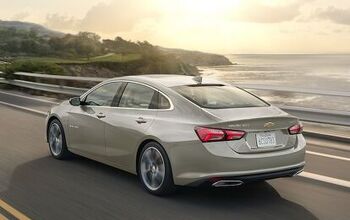Indonesia is Suffering the Consequences of China's EV Explosion

Electric vehicle naysayers love to talk about the environmental impact of mining raw materials for batteries. While those arguments are often rooted in some degree of truth, they’re generally made as the only argument and are levied without much evidence for support. Though it’s true that mining and processing nickel, cobalt, lithium, and other materials is awful for the environment, we’re learning more about the geopolitical and financial implications of the practice.
Jalopnik reported that a Chinese nickel refinery’s operation in Indonesia is destroying the local ecosystem and accelerating the decline in natural habitats for wildlife. The Indonesia Morwali Industrial Park is located on a large island in the country and has released so much pollution over the last ten years that locals can’t fish or use the water.
People report warming waters and fewer fish, and in some cases, the once-bountiful rivers have turned into trickling streams of mud. Workers at the facility report sickness from inhaling chemicals and ash from the mining processes. For China, the impacts are far away and seemingly unimportant. Its financial resources and size give it a great deal of power in the arrangement, as the giant nation has invested billions and amassed a 61 percent stake in the total nickel production.
As Jalopnik pointed out, the negative impacts of this partnership are felt solely by Indonesia. China is some 5,000 miles away from the island nation and has little concern for the destruction happening so far from its doorstep. As demand for electric vehicles accelerates, we’re likely to hear about more of these situations, and other such problems are going on right now.
Earlier this year, Tesla agreed to invest billions of dollars in nickel and a potential battery factory in the country over the next few years. It seems odd that Indonesia would continue pursuing such investments, knowing the havoc they wreak on its environment. Still, it’s likely tough for the country’s leaders to ignore the goldmi-I mean, nickel mine under their feet.
[Image: jafriyalbule via Shutterstock]
Become a TTAC insider. Get the latest news, features, TTAC takes, and everything else that gets to the truth about cars first by subscribing to our newsletter.

Chris grew up in, under, and around cars, but took the long way around to becoming an automotive writer. After a career in technology consulting and a trip through business school, Chris began writing about the automotive industry as a way to reconnect with his passion and get behind the wheel of a new car every week. He focuses on taking complex industry stories and making them digestible by any reader. Just don’t expect him to stay away from high-mileage Porsches.
More by Chris Teague
Latest Car Reviews
Read moreLatest Product Reviews
Read moreRecent Comments
- Dr.Nick What about Infiniti? Some of those cars might be interesting, whereas not much at Nissan interest me other than the Z which is probably big bucks.
- Dave Holzman My '08 Civic (stick, 159k on the clock) is my favorite car that I've ever owned. If I had to choose between the current Civic and Corolla, I'd test drive 'em (with stick), and see how they felt. But I'd be approaching this choice partial to the Civic. I would not want any sort of automatic transmission, or the turbo engine.
- Merc190 I would say Civic Si all the way if it still revved to 8300 rpm with no turbo. But nowadays I would pick the Corolla because I think they have a more clear idea on their respective models identity and mission. I also believe Toyota has a higher standard for quality.
- Dave Holzman I think we're mixing up a few things here. I won't swear to it, but I'd be damned surprised if they were putting fire retardant in the seats of any cars from the '50s, or even the '60s. I can't quite conjure up the new car smell of the '57 Chevy my parents bought on October 17th of that year... but I could do so--vividly--until the last five years or so. I loved that scent, and when I smelled it, I could see the snow on Hollis Street in Cambridge Mass, as one or the other parent got ready to drive me to nursery school, and I could remember staring up at the sky on Christmas Eve, 1957, wondering if I might see Santa Claus flying overhead in his sleigh. No, I don't think the fire retardant on the foam in the seats of 21st (and maybe late 20th) century cars has anything to do with new car smell. (That doesn't mean new car small lacked toxicity--it probably had some.)
- ToolGuy Is this a website or a podcast with homework? You want me to answer the QOTD before I listen to the podcast? Last time I worked on one of our vehicles (2010 RAV4 2.5L L4) was this past week -- replaced the right front passenger window regulator (only problem turned out to be two loose screws, but went ahead and installed the new part), replaced a bulb in the dash, finally ordered new upper dash finishers (non-OEM) because I cracked one of them ~2 years ago.Looked at the mileage (157K) and scratched my head and proactively ordered plugs, coils, PCV valve, air filter and a spare oil filter, plus a new oil filter housing (for the weirdo cartridge-type filter). Those might go in tomorrow. Is this interesting to you? It ain't that interesting to me. 😉The more intriguing part to me, is I have noticed some 'blowby' (but is it) when the oil filler cap is removed which I don't think was there before. But of course I'm old and forgetful. Is it worth doing a compression test? Leakdown test? Perhaps if a guy were already replacing the plugs...


































Comments
Join the conversation
Chinese battery manufacturers like BYD and CATL are quickly transitioning to lower-cost LiFePO4 chemistry. That does away with the need for nickel and cobalt in batteries.
But if people are really concerned, they can stop buying stainless steel appliances, as stainless steel alloys consume the majority of nickel. And avoid everything "chrome" plated, which has a thick plating of nickel and a very thin layer of chromium on the top.
The problem lies with poor safety and environmental practices not the minerals or products being manufactured.